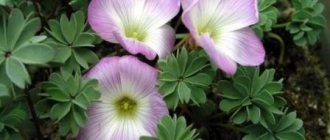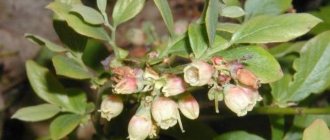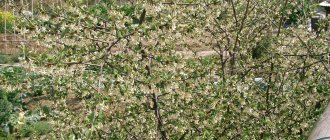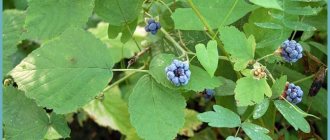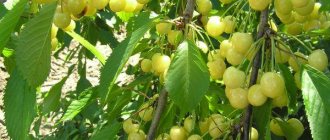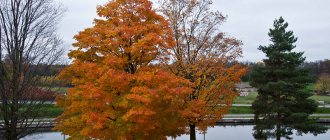Willow: description
The willow genus includes almost 600 plant species. Moreover, these can be both trees and shrubs. Most of them grow in the cool part of the northern hemisphere, in Eurasia and North America. The closer to cold regions, the smaller the size of plants that have mastered the climate. The smallest representatives of the species are found in the northern regions, and they are so small that their height does not exceed the height of moss.
In most species, the shoots are flexible, thin, the leaves are narrow, long, pointed both on the outer edge and at the petiole. Willow blooms in spring, before the first leaves appear; small flowers are collected in earrings. Some species bloom after the leaves bloom. After flowering ends, a fruit is formed in the form of a capsule with seeds. Small, light seeds are carried by the wind over vast distances. In the open air they remain viable for a short time, but if they get into water they can wait for favorable conditions for several years.
The most common and frequently found representative of the genus in the middle zone is the weeping white willow. An adult tree reaches up to 25-30 m in height and lives for about 100 years. The willow trunk is powerful, the bark is gray, and the lower part of the tree is covered with cracks. The crown of white willow is wide, spreading, see-through. The leaves are dark green, smooth, shiny, light on the underside, covered with whitish down. In calm weather the tree is green, but in a light breeze the leaves move, turning with their undersides, and the foliage of the tree appears white.
Types of weeping willow
There are more than 600 species of willows in nature. They grow everywhere, even found in the tundra and the Arctic.
Weeping willow grows up to 25-30 meters and can live up to 100 years. The trunk of the tree is powerful, covered with gray bark. The crown is wide, spreading. The leaves have a dark green tint; on the underside they are lighter and seem to be covered with whitish fluff.
Weeping willow species amaze with their splendor and diversity. Here are just the most popular of them:
- White willow. The tallest (its height is 25-27 meters) and unpretentious species. So named due to the silvery color of the leaves. It tolerates frost well and can grow in shaded areas. Looks great among trees with dark green foliage and makes an ideal backdrop for red-leaved trees.
- Goat willow (bredana). In the spring, when flowering, fluffy flowers bloom on the shoots of this species, and goat willow looks like a huge dandelion. This weeping willow is planted on a summer cottage in group plantings, although it looks more effective in combination with plants of excellent foliage color.
- Willow is twig-like. Large tree (up to 8 meters) with a large number of branches. When flowering, small cylindrical catkins (up to 6 cm) are formed on the branches, and the bush becomes fluffy during this period.
- The willow is the most graceful. It differs from other willows by its shiny brown stems. This type of weeping willow is valued for its good rooting of cuttings and for how quickly it grows (it takes no more than 2 years to grow).
- Babylonian willow. The tree grows no more than 15 meters in height with a crown up to 9 meters in diameter. It grows quickly and looks effective in group plantings near water bodies.
Willow: planting
All willows are unpretentious plants that are found almost everywhere in nature. Different varieties of willows have taken root in different regions, so the planting location and type of plant are chosen based on the characteristics of the area.
Landing location
Light to medium loamy soils are best suited for planting. Choose a place that is well-lit, sunny or lightly shaded. Willows do not grow in full shade. Even in natural conditions, willows are not found in the depths of the forest, although they feel great at the edge of the forest. To plant willow, you can use an area with close groundwater.
Boarding time
Willow with a closed root system is planted at any time of the year, from early spring to late autumn, provided that the seedling is planted together with a lump of earth from the planting container. The optimal time for planting seedlings with an open root system is early spring, before buds open, or autumn, after the end of sap flow. It should be borne in mind that varieties with low frost resistance will not have time to take root properly when planted in autumn, so when planting in autumn, the ground under the seedlings is mulched with dry leaves of trees and shrubs, and the seedlings themselves are covered with spruce branches.
Landing
- Digging a planting hole. For shrubby forms, the size of the hole is 50 cm in diameter, for woody forms - 60 cm, 40 cm deep. For a willow seedling with a closed root system, a hole is dug according to the size of an earthen clod.
- When planting on heavy clays, drainage is necessary; for this, 20-30 cm of sand or crushed stone is poured into the bottom of the planting hole.
- Prepare a nutritious soil mixture from soil, compost and peat, mixed in equal parts. Add azofoska to it at the rate of 200 g per plant and stir thoroughly.
- Fill the planting hole one third with prepared soil and place the seedling in it.
- The seedling is filled in, the soil is compacted so that a pit is formed around the seedling to facilitate watering.
- 2 buckets of water are poured under each seedling.
- If the seedling is tall, at first you can install a support stake to fix the vertical position of the tree.
Selection of seedlings for planting
Under natural conditions, willow can reproduce by seeds, but in cultivated willows, weeping willows are propagated by cuttings or by obtaining a seedling.
First of all, winter stem seedlings with good mature wood are selected. It is advisable that the young animals be one to two years old and harvested either in early spring or late autumn.
Before the buds open, the seedlings are placed in damp sand or in a container of water.
Did you know? Willow appeared on earth a long time ago - its remains are found already in the Cretaceous period, and some modern species (ashy, white, twig-shaped) grew in the Quaternary era.
Willow: care
In order for willows to develop quickly and look attractive, you should know the individual needs of these plants and the features of caring for them. Growing willow requires the most attention during the first time after planting.
Watering
Weeping willow is a moisture-loving plant, so it needs frequent watering and spraying. Young plants grow very quickly, especially in the first years of life; some varieties are capable of growing up to 3 meters per year. Seedlings are watered once a week, at the rate of 2-5 buckets of water per plant. Watering is done early in the morning or in the evening, after sunset. When watering, water is poured not only under the root, but also onto the crown of the plant.
Fertilizer
At the beginning of the growing season, the soil under the willow is loosened and mulched with peat. The plant is fed with complex fertilizers. In total, 2-3 such feedings are carried out per season, the last feeding is carried out in July. In the second half of August, superphosphate and potassium sulfate are applied under the willows.
Do not leave fallen willow leaves under the tree, as they contain tannins that will adversely affect the development of the plant.
Trimming
For the first 2-3 years, the willow grows uncontrollably and does not need to be pruned. Then the tree or shrub rises and it becomes necessary to shape it. The best time for formative pruning of willow is spring, after flowering has ended. The exception is dry branches frozen over the winter or broken, which are cut off in early spring.
Don’t be afraid to cut willow branches; it won’t cause any harm to the plant. Branches of decorative species are pruned by 10-20 cm, then lateral shoots are formed from the remaining upper buds, and the plant acquires an attractive dense crown. Mature trees are pruned annually by cutting off their long branches hanging to the ground at a height of 2 m from the ground. By pruning, one achieves both a spherical or umbrella-shaped appearance of shrubs and trees, and a regular rectangular shape when planting willows as a hedge.
Planting willow cuttings in autumn
Willow can be an excellent decoration for your site. In landscape design, this tree is used in composing compositions, arranging living gazebos and hedges. In order for cuttings of a cultivated willow variety to take root and form a powerful root system, it is necessary to follow the planting technology.
I thought that the topic of cuttings was already closed, but some readers had questions. In order not to answer everyone individually, I decided to devote another page to the preparation of cuttings. Well, look, or rather read.
For each type of woody plant, it is important to establish the most favorable period for cuttings, which is determined by the calendar period and the degree of lignification (young shoots rot easily, their immature tissue is not able to form roots). In the middle zone of the European part of the former USSR, the period from late May to early July is considered optimal for rooting green cuttings of deciduous trees.
In the early stages of this period, rooting proceeds better; in addition, the entire shoot, the lower part of which is semi-lignified and the upper part is green, is used for cutting cuttings. At later stages of this period, when the deciduous tree has finished growing, almost a third of the shoots prepared for cuttings are not used.
The best time for green cuttings of varietal lilacs and mock oranges occurs during flowering (cuttings should not be taken from shoots that have flowers or flower buds), and for a number of other species and forms of deciduous trees - during the period of intensive shoot growth. Summer cuttings in a greenhouse using strong lateral shoots of the mother plant “with a heel” or apical cuttings are recommended for barberry, euonymus, buddleia, weigela, wolfberry, hydrangea, honeysuckle, cinquefoil, viburnum, cotoneaster, broom, rhododendron, etc.
Conifers are cut either in the spring, before the buds begin to swell (for example, shoots of western thuja, spruce, fir and junipers are harvested from late April to early May) or in the summer, when they finish active growth (from mid-June to mid-July). The current year's shoots are cut into cuttings when they are still quite flexible and the bark is green.
In most species of woody plants, cuttings are taken from the middle part of the shoot, discarding the upper part that is too soft and the lower part that is too woody. When cutting a cutting from the upper part of a full-fledged shoot of deciduous and coniferous trees (the so-called apical cutting), the apical bud is left on the cutting.
It is better to cut shoots into cuttings early in the morning or on a cloudy day (to reduce evaporation from the cuttings); large leaf blades are shortened by half and the cut shoots are placed with their lower ends in a vessel with water. For successful root formation, the length and thickness of the cutting are important (very thin cuttings are undesirable).
When preparing cuttings, use a sharp knife to make a beveled cut directly under the bud or 1 cm below the bud. A straight upper cut is made above the kidney. To reduce transpiration, the lower leaves of the cuttings are removed, and large ones are cut in half. It is better not to cut off the leaves of plants that are difficult to root.
Cuttings should be harvested in a shaded place, constantly spraying them with water, since the cut shoots should not be allowed to dry out or even wilt.
Before planting, the cut cuttings are placed in a container with a small amount of water, sprayed and covered with a damp cloth. Cuttings of some plants that cannot tolerate prolonged exposure to water are placed in damp peat or plastic film. Freshly cut cuttings of coniferous plants (pine, spruce, larch) must be kept in water for 2-3 hours (since a resin is released on the cut surface of their cuttings, which prevents the absorption of water from the substrate after planting);
When propagating trees and shrubs using lignified (“winter”) cuttings, strong, mature annual shoots are used for cutting cuttings (for poplars and willows, sometimes even two-year-old shoots and older). Woody cuttings are often used to propagate mock orange, privet, honeysuckle, hydrangea, snowberry, tamarisk, spirea, buddleia, weigela, forsythia, deutzia, elderberry, kerria, cinquefoil, and currants.
Shoots of woody plants are harvested for cuttings either in the fall after leaf fall, or during the winter dormancy period (November-February), or in early spring before the buds swell. Cuttings taken from young shoots from the lower part of the trunk of the mother plant take root better. To prepare cuttings, it is good to use the shoots formed after pruning the tree “to a stump”.
The easiest way to root cuttings of deciduous trees is to plant them in the fall after leaf fall in open ground (in the partial shade of the garden, in well-drained soil). Cuttings are cut from the lower and middle lignified parts of the shoots immediately before planting (in this case, “soaking” of the lower cut is allowed). The thickness of the cuttings is usually 7-12 mm, length 20-30 cm (for rooting in greenhouses, cuttings are cut 4-10 cm long).
In deciduous plants, cuttings cut in autumn (after the period of leaf fall) no longer have leaves, and in evergreen plants, leaves are removed from the lower and middle parts of the cutting (only the upper third of the length of the cutting remains leafy). The end of the cutting is treated with a phytohormone and planted in a prepared groove in open ground.
Shoots harvested in autumn and winter for spring cuttings and planting are tied into bunches and stored in the basement with their lower parts buried in wet sand, or in snow piles, or in a refrigerator (at a temperature of 1-3 degrees). In early spring, cuttings are cut from them, treated with phytohormone and planted in deeply cultivated soil vertically or slightly obliquely, deep (to the top bud), pressing the soil tightly around the cuttings; water abundantly.
In willow, you can simply take a branch and hold it in water; you can see the roots at all the nodes.
Willow propagation
Wild willows reproduce by seeds; in cultivation, the plant is most often propagated by cuttings or layering. A plant grown from a cutting retains all the varietal characteristics of the parent species.
Reproduction by cuttings
- Cuttings are cut in the spring, before the leaves appear. Lignified parts of shoots that are one to two years old are better suited for rooting. The lower cut is made obliquely, the top of the head is cut off. Cuttings of tall species are cut into lengths of 30-40 cm; for shrub forms, cuttings of 15-20 cm are sufficient.
- Before planting, willow cuttings are dipped in root solution for 18-24 hours.
- The finished planting material is stuck into the ground so that 2-3 buds remain above the soil level. The cutting can be positioned either vertically or at an angle to the ground. When planting at an angle, the lower part is placed in the direction of the south or southeast.
- Water the soil daily 1-2 times a day so that the soil is constantly wet.
- The soil around young seedlings is regularly weeded to remove weeds, since at an early stage of development the weak plant is clogged by tall weeds.
Cuttings can also be germinated at home; to do this, they are placed in a jar of water and wait for the first roots to appear, after which they are planted in the ground.
Green cuttings that are cut during the growing season of the plant also root successfully. To do this, remove the apical bud and lower leaves from a cutting 15-20 cm long, and shorten the upper ones. The cutting is stuck into a wet nutrient mixture and greenhouse conditions are provided for it, covered with a jar. If you need a lot of seedlings, form a greenhouse using film. The survival rate of green cuttings is 50-90%, depending on the conditions created for rooting.
Reproduction by layering and willow grafting
Not all willows are propagated by cuttings; for some, only propagation by layering or grafting onto a standard is suitable.
- To propagate by layering, basal shoots with formed roots are dug up in early spring, the cut roots of the seedling are treated with fungicides, and the plant is planted in a new place, observing all the rules for planting a new seedling.
- Some types of willows are grown only on a trunk, so to obtain a varietal plant, a branch of the desired varietal plant is grafted onto a trunk of the required height.
Reproduction
The tortuous willow takes cuttings well. It’s enough to stick a sprig of it (no need to take the thinnest tips) in a shady place in the area and don’t forget to water it. It is better to root with short cuttings. The roots produce cuttings not only in the ground, but also in water.
It is believed that willow drives out evil spirits and protects against bad people. Whether this is so, everyone decides for himself. But regarding the decorativeness of winding willows, the opinion is clear: they are spectacular and decorate any area.
Willows reproduce well by cuttings. From May to the end of July, cuttings can be cut and planted in ridges in a shaded place. With mandatory abundant watering, roots form in the cuttings. Both willows are beautiful in a solitary planting, framed by ornamental shrubs with beautiful foliage.
Interesting site materials
- Schisandra chinensis: agricultural cultivation techniques, beneficial properties
- How to properly grow gatsaniya from seeds at home
- Living pictures
Willow diseases and pests
Even such an unpretentious plant as willow needs to monitor the health of its leaves and wood.
Willow diseases
Fungal diseases on willow include powdery mildew, rust, various types of spots, and scab. The appearance and development of fungal diseases is facilitated by increased humidity resulting from long-term rainy weather. To combat such diseases, ornamental varieties of willows are treated with fungicides for prevention twice a season - in spring and autumn, as well as during the season when the first signs of the disease are detected. Tall tree varieties are pruned so that their branches do not touch the ground. Fungal spores overwinter in fallen leaves and infect plants again in the spring. Without timely control, fungal colonies grow and the willow may die.
Regularly inspect the bark and branches of willows, since when necrotic signs appear, timely measures must be taken to combat the disease and prevent its development and transfer to other plants. Infected branches are removed to healthy wood, and the cut areas are treated. Avoid mechanical damage to tree bark, through which disease vectors usually enter.
Preventive treatments against cytospor and diplodin necrosis are carried out in August. If treatment was not carried out in the summer, then it should be carried out in May. One treatment per season is enough.
Willow pests
There are also pests on willow. Caterpillars of the willow silkworm eat the leaves, as a result of which the bush or tree loses its decorative appearance. To combat the pest, clutches found on leaves and bark are removed, hatched larvae and white butterflies are collected by hand and destroyed.
Aphids suck out the juices of the plant, young buds and leaves fall off. Aphid eggs overwinter on the bark of a tree, and without pest control, new colonies of aphids appear from them the next year. For prevention, avoid planting plants that the pest loves near willow. Affected plants are treated with insecticides.
Landing technology
The cuttings are planted on film at an angle of 45°. This allows you to place two cuttings in one hole. This technology has several advantages compared to planting in open ground:
- Black film acts as mulch. Therefore, an excellent microclimate is created under the film, which increases the rate of formation of the root system.
- The second advantage of this technology is the impossibility of the development of weeds, which often “clog” the willow when planting cuttings in open ground.
- The third advantage of this planting is the synergy of the two cuttings. Over time, plants grow together into one single organism. The root system of the plant with this technology is very powerful.
If you want to get a more powerful willow trunk, plant the plants at a distance of 30 cm. In order to grow willow twigs for weaving, the distance between the cuttings is reduced to 15 cm.
As a rule, the willow is large, its height on average reaches 10-15 m, with the exception of giants 35-40 m and dwarf creeping species only a few centimeters in height.
Willow: types and varieties
Among the willows there are tall trees, shrubs and creeping species. They all grow quickly, adapt well to their environment, and can be trimmed and shaped. Let's look at the varietal characteristics of some of them.
1. Matsudana willow - a tall tree, up to 10-12 m, grows in its natural environment in Korea and China. More often, its decorative form is used for cultivation, which grows in the form of a bush, its branches are curved, the crown is highly decorative, openwork. For planting, a sunny, well-lit place is required.
2. All-leaved willow is a tall, spreading shrub. The leaves are oblong, oval, the shoots are red or yellowish. The shape of the bush and its leaves resemble a fern. It blooms with dark red earrings, emitting a pleasant aroma. In nature it grows in damp meadows. Decorative varieties of whole-leaved willow:
- All-leaf willow Hakuro Nishiki is a small shrub or tree with a spherical crown. It has unusually decorative foliage and shoots. Young leaves are pink-white, shoots are red or olive.
- Willow whole-leaved Pendula is a creeping shrub that looks most advantageous when grafted onto a standard.
3. Willow, or willow , is a shrub or tree with strong growth force, in nature it grows near a body of water, prefers sandy soil. The branches are thin, flexible, young shoots are red, with a waxy coating. The leaves are long, pointed, bluish on the underside. Unpretentious species, easily propagated by cuttings.
4. Brittle willow, or broom , differs from its relatives in the shape of the leaf branches. Its shoots are fragile, olive-green, the leaves are elongated, pointed, with a serrated edge, with a blue tint on the underside. The crown of its natural appearance is round, asymmetrical, openwork. As a decorative species, the spherical shape of the Bullata variety of willow is used, which has a dense, even, rounded shape.
5. Babylonian willow is a tall tree with a chic weeping crown. It grows up to 15 m, the crown diameter reaches 9 m. It is successfully used in landscaping parks and reservoirs. The leaves are long, narrow, serrated, blooms after the leaves open.
6. Goat willow is the most common type in landscaping. This is a tree up to 10 m with a dense crown and wide oval leaves. Young leaves are pubescent; over time, the upper part becomes smooth. It blooms with large earrings, decorative forms are propagated by cuttings, and in nature by seeds. Many varieties of decorative forms of this species have been bred. The most interesting of them:
- Zilberglyants is a highly decorative variety, especially good during flowering due to the large number of large fragrant earrings. The leaves are wide, oval. Tolerates partial shade well and has high frost resistance.
- Mas - tree or shrub up to 10 m, spreading crown, blooms profusely. The male form has decorative properties.
- Weeping is the standard male form of the plant. Grows up to a maximum of 3 meters. Multiple branches hang densely to the ground. Earrings are numerous, with a pleasant aroma. It grows very quickly, is frost-resistant and shade-tolerant.
Features and types of plants
Willow belongs to the shrubs and has more than 300 species. Some of them are successfully grown by gardeners on their plots. The plant has beneficial properties and is used in medicine, cosmetology, and various crafts. Thanks to its grace and extraordinary appearance, the tree has earned many poetic descriptions in literature and songs.
A unique feature of the weeping willow is its beautiful crown, which appears translucent from a distance. The branches are drooping, falling down vertically - this is what a talnik tree looks like. The flowers are collected in inflorescences called catkins. Most species reach a height of 15 m, but there are also dwarf species that grow no higher than 2-3 m. In nature, giant willow specimens up to 40 m high are found.
In landscape design, shrubs are planted alone and together with other plants. Willow is not placed in groups, as it requires a lot of space. Dwarf varieties look great on alpine hills, and medium ones are planted along the site, forming a hedge. Mature plants are tolerant of pruning and can be used to create interesting shaped compositions.
If there is an artificial pond on the site, the willow will take its rightful place there, framing a stream or pond with its branches. In conditions of high humidity, the tree feels great, and at the same time creates a pleasant shade under which garden owners can relax. Shrubs are often planted on slopes to prevent further shedding. Willow has a powerful and branched root system, which prevents the soil from crumbling.
Since there are about 3 hundred species of willow, not all are given here, but only those that have pronounced decorative properties. They can be cut, planted in a row or singly. Any of these willows will decorate your garden plot:
- Babylonian. Tree up to 15 m high, with a voluminous crown and weeping branches. The foliage is shiny, the shoots hang to the ground. Grows quickly in moist soil.
- Goat. Looks more like a tree than a bush. The leaves are rich green, rounded, and densely spaced. The crown can be spherical or irregular in shape. During flowering, the plant exudes the aroma of honey.
- Creeping (Armando). You can’t see the trunk behind the branches of this shrub, they are so thick. The crown is very lush and voluminous, as are the pink flowers, which seem fluffy from a distance. Tolerates low temperatures well, suitable for growing on loggias, terraces, balconies and in open ground.
- White. Long-lived shrub: grows up to 100 years. Feels good on the banks of rivers and lakes, next to springs and streams. The leaves are silver, the flowers are yellow, collected in long earrings. The tree grows up to 25 m.
- Crying. A distinctive feature is the yellow bark, which gives a decorative appearance. The branches drop very low, as if they were crying, which is why the willow is a weeping one. At the same time, the tree itself does not grow large and looks great in a flower bed.
- Haruko Nishiki. A low shrub with drooping branches and spotted leaves. Spotting does not appear on mature trees.
- Hairy. The species got its name because it appears pubescent. It grows up to 2 m, has round leaves and light catkins. Feels good in harsh climatic conditions and is not damaged by frost damage.
- Entireleaf. Sprawling bush with arched leaves. The structure of the shoots is almost like that of a fern. During flowering, it is covered with a scattering of reddish catkins, fragrant with a hyacinth aroma.
This is a shrub with thin branches, most often not exceeding one meter in height and striking in its elegance. The bark is yellow with a bluish tint. Thin branches hang almost to the ground. The crown of the bush is dense and consists of opposite leaves ranging from 3 to 13 cm in length.
Linear-lanceolate stipules reach a length of up to 1.8 cm and fall off very early. During flowering, densely flowered, cylindrical catkins appear.
There are not many species of this plant. The following varieties are popular.
Variety Nana
A low, spherical shrub reaching a height of up to 1.5 m and a width of up to two meters. The plant has a well-developed root system, which allows it to be used to strengthen the soil cover. Its shoots are thinner than those of the main species. They are brown with a red tint. The plant begins to flower in early spring, before or along with the leaves.
The shrub is characterized as frost-resistant and light-loving. It tolerates dry periods well and recovers quickly after pruning. Purple willow Nana is used in landscape design to strengthen and decorate the banks of various bodies of water. It can also often be found in bush groups in flooded areas. Nana is used in hedges and gardeners use it to create different shapes.
Iva Pendula
The shrub has a weeping crown shape with blue-green leaves. The plant tolerates prolonged flooding well, but is also considered drought-resistant. Willow tolerates the cold season well. It is used to decorate garden plots and strengthen the shoreline of reservoirs. This plant is propagated by grafting onto a standard.
Both types are distinguished by their unpretentiousness. However, it should be borne in mind that when planted on the shady side, the crown of these plants may change its shape and, as a result, lose its attractiveness.
Weeping willow is rarely found in summer cottages, but some gardeners still include it in garden compositions. She feels best near natural or artificial reservoirs.
The plant is distinguished by a variety of species, which are represented by trees and ornamental shrubs. All of them are unpretentious, and therefore easily adapt to different climatic conditions.
Among the famous varieties are:
- White willow. A tree up to 25 m high can be called a long-liver, since its lifespan reaches 100 years. It got its name from the foliage, the lower surface of which is painted silver. Flexible long branches form a weeping crown descending to the ground. The bark is brown, with a pronounced yellow tint.
- Babylonian willow. Another long-liver, capable of growing up to 15 m. The narrow-lanceolate leaf plates are green with a bluish tint. Flexible, thin, shiny shoots of a reddish or greenish-yellow color hang down. The tree will grow much faster in well-lit areas near a water source.
- Shaggy dwarf willow. The plant is a low shrub (up to 2 m), different from other varieties. The branches are thick and knotty. Downy, rounded leaves, dark on one side and silvery on the other. It is often used in landscape design, since the crown can be given any shape.
- Goat willow. Most often the plant can be found in park areas. The tree itself is small and compact, with stems hanging to the ground. The foliage is rich green in color and rounded in shape. It has a sweetish aroma during the flowering period.
Weeping willow requires little care and is easy to grow.
This video presents interesting species and varieties of weeping forms.
Landing rules
In order for the weeping willow to take root well and feel comfortable, certain agrotechnical rules must be followed when planting it.
The best time to plant seedlings with an open root system is early spring. After the end of frost, they are planted in open ground until the juices begin to flow.
You can also carry out the procedure in late autumn, just before wintering. However, varieties that are less resistant to frost may not survive the winter well.
Experienced gardeners recommend covering young plants with spruce branches and mulching the soil with fallen leaves or pine needles.
Seedlings with a closed root system can be planted any time from March to November.
Any location that is not in full shade is suitable for growing weeping willow. It does not grow in low light conditions. The plant is best planted in the sunny part of the summer cottage, where groundwater is close to the surface.
We invite you to familiarize yourself with what the fruits of ash, maple and linden look like?
The tree does not like dry soil, so it needs to be planted in light sandy or loamy soil. For better willow growth, it can be mixed with humus or compost.
Willow grows well in sun-exposed areas of the garden
Selection of seedlings
A healthy, beautiful tree can only be grown from good, properly prepared seedlings:
- they must be winter stem;
- well lignified;
- 1–2 years old;
- prepared before the juices begin to flow or before the first frost.
Before planting, the seedlings are placed in a container with sand or water, and as soon as the buds bloom, they are transplanted into open ground.
First of all, you need to dig a planting hole 40 cm deep. For a tree, its diameter should be 60 cm, for a bush – 50 cm.
Light soil does not need to be drained, but heavy loams require a drainage layer (20–30 cm) consisting of river sand or small stone. The soil mixture should contain soil, compost and peat.
Gardeners also recommend adding 200 g of azofoska to it, mixing well and filling one third of the hole.
Rules for planting weeping goat willow
Weeping willow requires minimal care, so growing it in your summer cottage will not cause much trouble.
Watering and fertilizing
Since the tree loves moisture very much, it needs to be watered frequently and abundantly. One plant needs 20 liters of water once a week. In case of prolonged absence of precipitation, the volume is at least doubled. It is better to water in the morning, when the sun has not reached its peak, or in the evening. It is necessary to moisturize not only the roots, but also the green part of the willow.
The tree is fertilized 4 times a year. Before the buds ripen, the soil around the trunk is loosened and covered with a layer of peat mulch. Fertilizing with complex fertilizers is carried out 2-3 times until July. At the end of August, the soil is fed with potassium-phosphorus compounds (superphosphate, potassium sulfate).
What types of willow are there?
Weeping willow in landscape design is an unusual solution. Among the varieties of willows you can find both full-fledged trees with a powerful trunk and ornamental shrubs. The varieties differ because they are adapted to live in different climatic conditions:
- White willow is a tree whose height can reach 25 m. The lifespan of the variety is about 100 years. White willow is called because its leaves are light-colored on the underside. The plant feels good on the banks of rivers and reservoirs; it can also be planted near an artificial pond.
- Weeping white willow also has an unusual color, but differs in the shape of its crown. Its branches are long, flexible, lowered to the ground. The tree bark has a rich yellow tint.
- Babylonian willow also has a weeping crown. It can reach a height of 15 m or more, and its lifespan is about 100 years. The leaves are light, but without a silvery tint. The tree grows quickly and reaches its peak. The most comfortable conditions for his life are well-lit shores of reservoirs.
- Shaggy dwarf willow is a shrub that does not grow higher than 2 meters. Its leaves are different from those that grow on the usual weeping willow - rounded and covered with light down. This plant can form a crown of an unusual shape, since the shoots are strong and grow upward. The shrub easily tolerates winter frosts and prefers to grow in moist soil.
- Goat willow is a distinctive tree that is often planted in parks and recreation areas. The shoots are directed downwards, and small round leaves grow on them. Flowering occurs in spring, during which time the tree emits a sweet honey aroma.
Article on the topic: Acacia podarilifolia description and features
There are other varieties of trees such as weeping willow. They can be completely different in appearance, but all belong to the willow family. These are not only large trees with branches falling to the ground, but also small bushes with unusual leaf shapes. With proper care and watering, willow grows quickly, and by pruning you can form a crown of the desired shape on it.
Hairy willow
This is a low shrub (0.5-2 meters), attracting attention with its silvery leaves of an original shape in the form of an ellipse. They are covered with silky hairs. In addition, the shoots have a silvery fluff (a photo of the tree and leaves of the weeping willow can be seen below). Delicate yellow flowers during flowering look like original candles pointing upward.
The plant is frost-resistant and loves moist and fertile soil. Gardeners often use it to decorate a garden plot with a small artificial pond. This willow looks very impressive in various compositions, with its location in the lower tier.
Planting and care
The weeping willow is not capricious and is easy to care for. You should pay special attention only to the composition and moisture content of the soil. Under natural conditions, the plant grows on loamy and sandy loam soils, and regularly receives the required amount of moisture from the reservoir. If the willow has to be planted far from natural sources of water (rivers or ponds), it will need to be constantly watered. On hot, dry summer days, it is useful to spray the shoots with water.
Before planting the seedling, you need to dig a small hole (60 cm deep). During the planting process, it is worth adding fertilizer so that the plant takes root faster. The lower 1/3 of the hole should be filled with a mixture of peat, soil and humus, the rest of the volume is filled with earth. The soil should be raked towards the plant, forming a mound. Make a small hole around it for watering. Immediately after planting the plant, you need to water it with 2 buckets of water.
Tall and unstable seedlings require additional support. A peg is placed to which the young tree is secured with a rope.
Willow does not need any additional feeding. It adapts well to sudden changes in temperature and tolerates frost and drought well. However, periodic fertilization of the soil with compost and humus can be beneficial. The most comfortable conditions for willow growth are on moist soil. It grows faster in areas where the groundwater level is high.
Goat willow
This is a large, fast-growing tree (height up to 12 meters, width up to 6) with a rounded crown and short trunk. Vertical branches have side shoots that are raised up and spread out. The leaves of goat willow are slightly pubescent, rounded or wide elliptical, colored green above and gray below.
The flowers, which have a honey aroma, have a yellow-silver tint. Goat willow becomes brittle with age (after 20 years). This variety of weeping willow (see photo in the article above) grows naturally in Central Asia and Europe. Reproduction usually occurs by seeds, and decorative forms by grafting.
Willow whole leaf
This plant is found in Japan and in the south of Primorye. General description of the weeping willow tree of this variety: a spreading shrub three meters high, the trunk is curved at the base, the leaves are narrow and oblong.
Due to the soft green tone of the leaves and their arrangement (similar to the leaves of a fern), as well as thanks to the shoots (arranged in an arch and inclined to the sides), the willow takes on an unusually beautiful appearance. Flowering occurs in May with the release of a hyacinth aroma. The plant looks great in any group or single plantings near water bodies.
Varieties common in Russia
When talking about willow, the adjective “weeping” is often added, and many people think that this is a separate variety of plant. In fact, this is a common characteristic of several varieties with a characteristic cascading crown. Many varieties of weeping willow are found in Russia.
A classic weeping variety , its elongated silver leaves combined with long flexible branches create a spectacular lush crown that flows like a tent. The crown diameter can reach 20 meters for an adult plant. The undoubted advantages of this variety include its unpretentiousness to soil and climate . Although white willow can grow even in soil with excess moisture, harsh winters with sudden temperature changes will not destroy it.
However, in the warm season, the tree requires a lot of light and heat - then the growth of the tree will be uniform, approximately 3 meters in five years. The maximum height of a willow tree of this variety is about 25 meters, and the trunk width is corresponding.
Flowering begins in the middle or end of spring, the flowers have a yellow-green color, collected in tassels up to five centimeters. A common popular name for willow flowers is cats, for the fluffiness and tenderness of the inflorescences.
Babylonian
Another recognizable and popular variety of weeping willow. from the previous one in a more elegant appearance . A mature tree reaches a height of about 12 meters, the crown spreads out in a similar diameter, and looks very delicate and elegant due to the thin flexible shoots flowing down. The color of the leaves themselves can be green with a golden tint or reddish. This tree can often be found in city parks, near water bodies.
Babylonian willow has several more subspecies, which are quite different from each other in appearance, but they all require a lot of sunlight and abundant watering.
We can safely say about this variety that it belongs to the decorative variety - since this tree adds less in height than in the girth of the lush head of foliage. The leaves come in various shapes, their color ranges from rich green to a grayish tint.
The main care for this variety consists of timely and proper watering . In the wild, goat willow is found on the edges of the forest, near roads and in ravines, that is, it does not need excessive watering and moisturizing, but it definitely loves water.
In order for the tree to delight with its beauty, fertilizer will also be useful. The complex option is suitable for feeding in spring and autumn - twice a season will be enough.
To ensure that the tree does not lose its aesthetic appeal, it is imperative to prune it .
An adult tree is pruned after the flowering period is over. Active growth will ensure that all shoots are cut to a third or two-thirds of their length.
Alpine
Another variety very loved by landscape designers. The plant can hardly be called dwarf, but its maximum height is 150-180 cm. A characteristic feature of the alpine willow is its early flowering - the flowers appear earlier than the leaves and have a very interesting color. Depending on the subspecies of the shrub, catkins on male trees can be orange, black, silver and even red.
Like all trees of the willow genus, the variety loves moisture and abundant watering , as well as a lot of sunlight. The decorative appearance requires mandatory pruning immediately after flowering has finished, and this happens in April.
In addition to the fact that the alpine variety is used in landscape design (including in alpine slides), it also takes root well in containers, decorating terraces and home “winter” gardens.
Entireleaf
One of the most beautiful varieties of ornamental willow - valued for its variegated foliage and crown, which forms very quickly. In demand both among gardeners and landscape designers.
Young shoots have a soft green tint, and mature leaves have an original color interspersed with white and pink. Under the scorching rays of the sun, variegated leaves may lose their brightness.
With proper and timely pruning, the crown will form at a slight distance from the ground, and will be about one and a half meters high. The crown of the plant is usually about a meter in diameter, but rarely exceeds one and a half meters.
Like all its fellows, the whole-leaved willow blooms, but only three years after thorough rooting . This low-growing species prefers open sunny places, but also grows quite well in partial shade, where the sun's rays are scattered and warm the plant during part of the daylight hours.
Holly
The official name of the Easter willow , whose thin branches are dotted with touching fluffy lumps, sounds exactly like this. There are at least three more accompanying names, but even without them, the willow is recognizable and loved by many since childhood, precisely because of this association with the bright holiday of the Resurrection of Christ.
Geographically, this plant is found everywhere, since it is perhaps the most unpretentious of the entire willow species. Sometimes willow is specially planted along river banks. In this way, the bank is strengthened, and siltation of the river is completely reduced to zero. It is worth noting separately that the plant is an excellent honey plant, and since it is one of the first honey plants to bloom, it serves as a good food source for bees. And beekeepers actively take advantage of this.
Shaggy or woolly
This shrub species differs from its fellows primarily in its frost resistance . Woolly willow grows successfully in the northern regions of Russia, Siberia, as well as in Scotland and Scandinavia.
Article on the topic: Pontic hawthorn description and features
Tundra and forest-tundra as a habitat make plants creeping and stunted, and willow is no exception. It got its name, which speaks for itself, thanks to its shaggy, even slightly felt-like branches. At the same time, the leaves of the variety are dull, inexpressive in color.
The branches, in addition to their “increased shaggyness,” are also characterized by knotty and thickness.
This unpretentious, but in its own way spectacular variety is used to form a hedge, or rather, its lower part, since the shaggy willow rarely exceeds 1 meter in height and, unlike other types of willow, does not tolerate excess moisture in the soil and piercing cold winds.
Application
Willow looks great in solitary and group plantings. Dwarf species of this shrub are often used to decorate rockeries and rock gardens. Most varieties withstand pruning well and are often used for making hedges .
Related article: Ketembilla description and features
Most often, willows are found near bodies of water, where they look especially impressive thanks to the silver-green hue of the leaves, successfully complementing the surface of the water. The big advantage of these plants is their powerful root system, which allows them to be used to strengthen slopes and prevent soil erosion.
Willow brittle
The tree, which grows quite quickly, reaches a height of up to 15 meters and a width of up to 8 meters. Sometimes brittle willow has two trunks, acquiring a curved shape. Its crown is asymmetrical and openwork. The long leaves are elongated, lanceolate. They are green on the upper side and bluish on the lower side. In autumn, the leaves take on a greenish-yellow hue.
The green-yellow flowers of this variety of weeping willow (photo below) bloom in May. Brittle willow shoots are yellow or brownish, brittle and glossy, and easily rooted. The plant is quite winter-hardy. Under natural conditions, willow grows in areas from Europe to Asia.
Brittle willow has a spherical shape in a variety called Bullata. The width of its crown reaches 15 meters, the height is 20. It is thick and has a beautiful even shape. The bare shoots are olive-green in color, the dark green elongated leaves are located mainly in the upper part of the crown, making the tree look quite original and attractive. This plant form is widely used to decorate hedges and to create beautiful compositions with large and tall ornamental trees. Willow is resistant to winds and frosts and is easy to care for.

